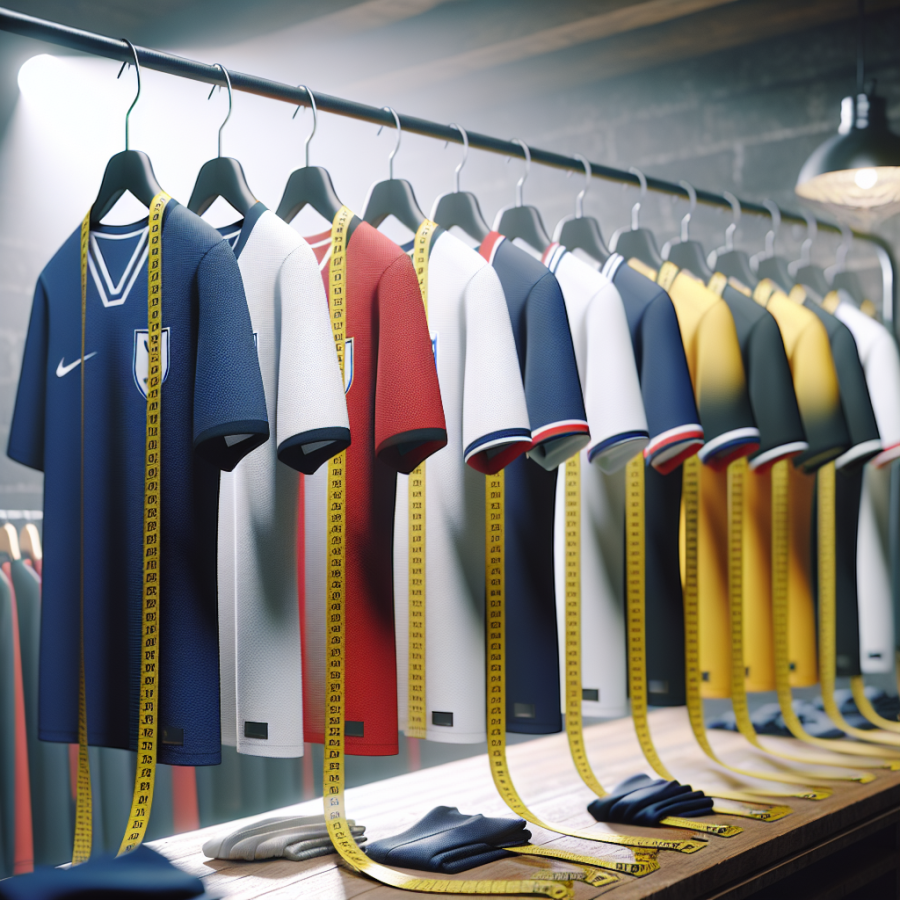The Intricacies of Soccer Jersey Sizing
Soccer jerseys are undoubtedly one of the staples of every soccer enthusiast's wardrobe. And while buying one may seem straightforward, surprisingly, many find that selecting the right jersey size can be somewhat tricky. This may bring up questions about the standards used to size these jerseys and whether they are true to size.
Firstly, it's critical to understand that soccer jerseys, much like any other clothing piece, do not follow a global standard in sizing. Essentially, this means that a small size from an American brand may not fit the same way as a small size from a European brand. The cut, fit, and sizing criteria of soccer jerseys can vary significantly between manufacturers and regions.
Another aspect to consider is the style of the jersey. Traditionally, soccer jerseys come in two primary styles: replica and authentic. Replica jerseys are typically made for the general fanbase and tend to follow a standard loose fit. As a result, they can be slightly more forgiving in terms of sizing and may fit just like your regular t-shirts.
On the flip side, authentic jerseys are designed to mirror the exact design worn by players on the field. They often feature athletic cuts and are designed to fit snugly. A size medium authentic jersey will undoubtedly fit a lot tighter than a size medium replica jersey. Thus, if you prefer a roomier fit, you might need to size up when buying an authentic jersey.
Additionally, it's worth noting that the fabric used in soccer jerseys is often stretchy due to the inclusion of materials like elastane, which allows for flexibility on the pitch. As a result, some jerseys may come across as smaller initially, but they will stretch out and mold to the body of the wearer after a few uses.
The fit preference also plays a considerable role in your experience with soccer jersey sizing. Some soccer fans prefer the jerseys to fit loose to provide comfort, while others may prefer a tighter fit for a more stylish, athletic look. All these factors contribute to the discrepancies experienced while trying to find a perfectly fitting soccer jersey.
In all, while it might be tempting to assume that soccer jerseys are always true to size, this is far from reality. Regional variations, the type of jersey, the fabric used, and individual fit preference make soccer jersey sizing a tricky business. Therefore, before buying, assess the brand, the style, the composition, and consult the specific size chart if available. Also, consider your fit preference to ensure you enjoy both wearing and styling your soccer jersey.
Read also:
Exploring the Art and Discipline of Judo: A Comprehensive Guide
Debunking the Myth: Sizing Accuracy of Soccer Jerseys
As soccer gains more popularity worldwide, the demand for soccer jerseys continues to increase. Not only are they an essential part of a professional player’s kit, but they also hold a significant place in fan culture. However, one common cause of confusion for fans and players alike is jersey sizing. There are plenty of myths surrounding the sizing of soccer jerseys, with one of the most prevalent being that they are not true to size. This highly prevalent myth needs debunking, and that’s precisely what this post aims to do.
To start, it’s important to understand why this myth exists in the first place. Soccer jerseys, like any other piece of clothing, are subject to variations in size due to different brands, cuts, and styles. For instance, an Adidas jersey's size can noticeably differ from a Nike jersey's size, even if both are labeled as “M”. Similarly, a player version jersey would fit differently than a fan version of the same size. Consequently, consumers who do not consider these factors often end up believing that soccer jerseys generally run smaller or bigger.
However, it’s not accurate to generalize that all soccer jerseys sizes are inaccurate. In most cases, soccer jersey sizes align with standard clothing sizes. If a person usually wears a size large t-shirt, they will likely fit a size large soccer jersey. It’s essential to note though, the fit may still vary based on the specific brand and style of the jersey.
Brand-specific size disparities are perhaps the most common source of confusion. For instance, Puma jerseys are generally known for a tighter fit, making them appear smaller. On the other hand, jerseys from brands like Kappa and Warrior are often true to the Western size scale, running a bit loose on the body.
Moreover, the style of the jersey further adds to the differences in sizing. Traditionally, player versions of jerseys are designed to hug the body closely for better movement and control on the field. Hence, these versions usually appear smaller and tighter than their corresponding fan versions. In contrast, fan jerseys are designed with the comfort of spectators in mind and usually run true to size.
To navigate through these complexities, it’s crucial for consumers to refer to the specific size chart provided by the brand for each jersey. Bear in mind, these size charts are often tailored for the brand’s country of origin. Therefore, it’s not uncommon for European brands to run a bit smaller when compared to American counterparts as the standard sizes differ in each region.




